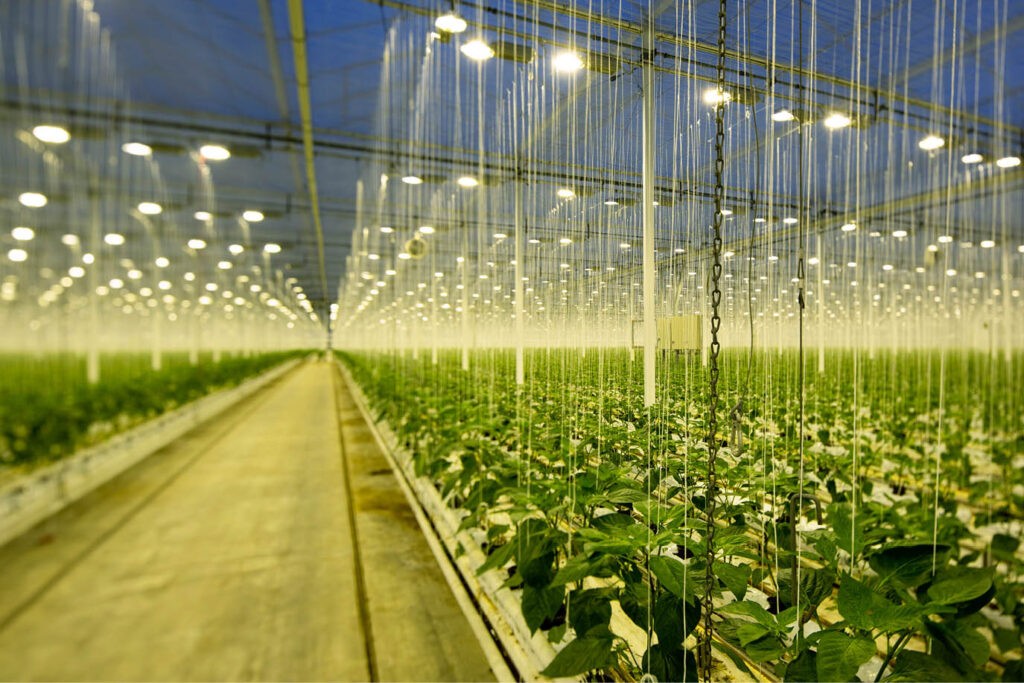Daniel Sullivan, Head of Global Natural Resources, discusses the outlook for natural resources as decarbonisation and the growing global emphasis on sustainability create powerful, multi-decade investment opportunities.
Key takeaways
- The next two years will be critical to ramp up global decarbonisation.
- Global capital is being mobilised to enable the transition to sustainable industry, cities, and agriculture.
- Electric metals, renewable energy and healthy food are areas with the potential to capture profitable growth opportunities.
Our team enters its fourth decade in natural resources management in a state of great anticipation that the global industrial economy is ramping up into a once in fifty-year revitalisation.
We are seeing companies busily writing 25-year growth contracts – think about that for a moment – those contracts will be in place until 2047. COP26 (26th United Nations Climate Change Conference) held in November this year, resulted in new commitments and initiatives launched that should see the world greatly changed by even 2030 and very substantially decarbonised by 2050, the primary target for global net zero carbon emissions.
Funding for this enormous transition is being committed at all levels of society, with governments, companies, cities, communities and individuals all playing a significant role.
Decarbonisation mega trends are driving the resources sector
Within the broad resources investment universe, we have identified three very progressive and potentially attractive areas that have industry leaders and innovators working to sustainably grow and contribute to the decarbonisation effort.
These areas are related to:
- Metals required for the electrification of vehicles;
- Switching from fossil fuels to renewable energy; and,
- Innovation in healthy foods to better utilise agriculture, given the global population is expected to grow by more than 20% till 2050.

The very strong economic recovery of 2021 followed the COVID-19 shock, with global growth boosted by government stimulus and progressive economic re-opening and normalisation. Low inventories in many commodities and disrupted supply chains caused the prices of most major commodities to soar, making 2020 the strongest year for commodities in the last five years. Early cold weather and some supply disruption led to the big energy price push, with prices of electricity, gas and coal flying high. Many of these short-term issues, however, are already being resolved.
Riding on the tails of the economic recovery
Globally, interest rates remain very low, and saving levels are high. Resource equities can offer an attractive risk-return profile, with many companies generally highly cash generative and with low debt. Natural resource assets are difficult to find, finance and develop and the past five to ten years have generally discouraged long-term investments. However, with global demand projected by the market to be compounding at high rates (well above the modest global gross domestic product growth), due to the growth in renewable power and electric vehicles, the markets have finally moved to a pro-investment position where companies can contemplate committing capital to twenty-plus year mega projects. Demand could be further supported by strong business fixed investment, which has improved faster than previous downturns. We can see this reflected in the recovery of the auto industry as semiconductor shortages ease. Rising infrastructure spending in the US and increased capital to meet the challenges of climate change across the world should support a favorable long-term backdrop for progressive companies.
The path to monetary policy tightening is already being well anticipated by the past year’s rising inflation and tightening labour markets with strong demand for workers . Central banks and macro prognosticators believe price increases are transient, with many commodity prices already significantly fallen from the very strong peaks.
China remains very important to global growth and resources. We are watching the property sector there closely, given property represents 60% of household net worth and are encouraged by signs of government intervention to ensure that their engineered slowdown does not get out of hand. Ensuring air is clean for the 2022 Winter Olympics and electricity constraints may hold back industrial activity through the winter, but after that the Chinese government will be able to stimulate the economy again. The implications of all of this for commodity demand are, on balance, positive as markets have already priced in a very aggressive and protracted slowdown as seen in the 50% fall in the iron ore price in late 2021.
A constructive view on miners
Given this backdrop, it’s easy to see why some investors have a negative view on the mining sector, which tends to perform best when commodity prices are rising. We are now moving to a part of the cycle where free cash flow improves. The positive tight supply, strong demand story for commodities is most likely to roll on into 2022 and prove supportive of energy and metals markets. Greenfield (new) mine developments remain challenging in terms of capital expenditure and permitting timelines. At some point, new supply will be needed and sustained high commodity prices are requisite. The big difference to previous cycles is the parsimoniousness of mining companies. In the past, capital expenditure would be soaring and aggressive merger and acquisition activity rife. We are not seeing that now and have an optimistic view on miners, as free cash flow from the mining sector builds, which should support strong returns to investors, with share buybacks and potentially higher prices for mining shares.
Incidentally, this part of the cycle is usually very constructive for small and medium-sized companies, which are typically free of the constraints that stop big miners from investing, and which are developing very interesting and needed new deposits to market. Successful exploration and project de-risking is typically highly value accretive and rewarding to shareholders. We also believe that certain cheap precious metal companies may need to be revalued. They are in better health than we can ever recall, with strong financials, steady cashflows and growth prospects. An inflationary environment with negative real rates (inflation-adjusted) could sustain the gold price and re-rate cashflows.
Positive outcomes from COP26
Decarbonisation and decarbonomics will be a driving force of capital spending in coming decades, spurred on by rising carbon prices. The pivotal COP26 meeting has been deemed in some quarters a disappointment because current emissions reduction targets still leave the world warming by more than the 1.5 degrees, which is seen as the limit to stave off the worst impacts of global warming. We see, however, several major positives result from the meeting. 126 countries, including the US and China, are on the right path, they are just not travelling quickly enough. The shift to meeting annually rather than every five years means that there will be constant pressure to increase the speed of travel on those countries that are lagging.
Corporate net zero commitments are well ahead of governmental targets and whilst many will reduce their emissions, there are industries with hard-to-abate emissions, which will need to buy carbon offsets. At COP26, the Paris rulebook was completed with the finalisation of Article 6, which allows countries to use emissions trading to help reach their 2030 reduction obligations, setting the stage for an international carbon market with the current illiquid unregulated markets for carbon credits becoming standardised. This will enable a significant ramp up in investment and development of nature-based projects and emissions reduction projects, such as carbon capture. There was much handwringing about the phasing ‘down’, rather than phasing ‘out’, of coal. Make no mistake, coal is definitely on the way out, with many investors avoiding coal producers.
A diverse range of compelling opportunities in resources

From an investment perspective producers of electric metals – ie, those that are required for the electrification of transport, such as copper, nickel, and lithium appear attractive, as do companies that facilitate carbon capture, enable or produce renewable energy and those that finance and create credits for the voluntary carbon market.
The Global Methane Pledge, announced during COP26, which aims to reduce manmade emissions by 30% by 2030 is a real win given that methane is a far more pernicious warming gas than carbon dioxide. One of the ways this will be achieved is by addressing emissions from animals, for example there are companies with a licensed animal feed additive that inhibits methane production. Another way of reducing methane emissions is by reducing consumption of red meat and encouraging fish, plant-based protein or cell-based protein as alternatives. We expect the robust growth of alternative protein to continue in 2022.
Within agriculture, there are opportunities to invest in large natural assets, such as forests, which are increasingly recognised as carbon sinks that can absorb large amounts of carbon dioxide from the Earth’s atmosphere. Getting paid to sequester carbon could generate significant revenues, but the real opportunity is to use this renewable resource in industry and in construction. Timber construction materials can replace those that have a high-carbon content, like concrete or steel, while trees can be used to make bioplastics, or biofuels or wood pellets for making electricity. Timber or pulp & paper companies are well poised in this value chain in a way that aligns ‘profit and planet’.
Conclusion
Despite a cloudy macro backdrop we remain optimistic about the prospects for natural resources companies which are the nexus of sustainable development and decarbonisation. While 2022 may see a pause after a very strong run, a multi-decade runway lies ahead as the world moves towards net zero. This means that the medium-term outlook for metals, energy, agriculture and certain industrials and their potential to change the world for the better is, in our view, incredibly exciting.
Footnotes:
Net zero: achieving a balance between the amount of greenhouse gases produced and the amount removed from the atmosphere.
Free cash flow: cash that a company generates after allowing for day-to-day running expenses and capital expenditure. It can then use the cash to make purchases, pay dividends or reduce debt.
Tight monetary policy: action by a central bank to slow down economic growth, to constrict spending in an overheating economy, or to curb rising inflation.
Carbon capture: capturing carbon dioxide produced by power generation or industrial activity, such as steel or cement making; transporting it; and then storing it deep underground.
Carbon offsets: a reduction in greenhouse gas emissions – or an increase in carbon storage (eg. through land restoration or the planting of trees) to compensate for emissions that occur elsewhere.
Pernicious warming gas: greenhouse gases (GHGs) warm the Earth by absorbing energy and slowing the rate at which the energy escapes to space.
Voluntary carbon markets: allow individuals, companies or governments to purchase greenhouse gas or carbon credits to mitigate or offset their own emissions by financing the avoidance or reduction of emissions from other sources, or the removal of greenhouse gas or carbon credits to mitigate or offset their own emissions by financing the avoidance or reduction of emissions from other sources, or the removal of greenhouse gases from the atmosphere. Voluntary markets involve credits used for voluntary purposes.
These are the views of the author at the time of publication and may differ from the views of other individuals/teams at Janus Henderson Investors. Any securities, funds, sectors and indices mentioned within this article do not constitute or form part of any offer or solicitation to buy or sell them.
Past performance is not a guide to future performance. The value of an investment and the income from it can fall as well as rise and you may not get back the amount originally invested.
The information in this article does not qualify as an investment recommendation.

